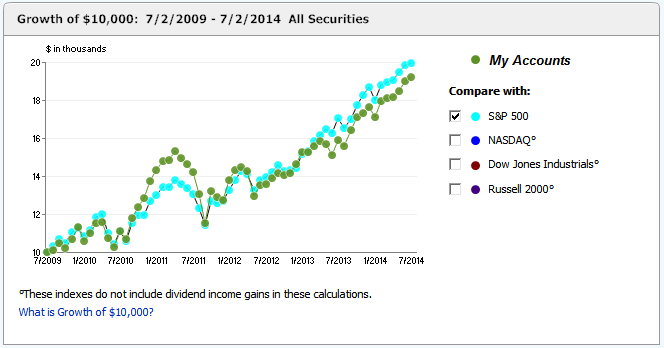Lsbcal
Give me a museum and I'll fill it. (Picasso) Give me a forum ...
Recently I was trying to answer the question for myself "what were poor months like in bull markets?". I created a chart using monthly data which I'll share but don't be too critical please as it wasn't intended for general viewing.
Here is an explanation:
1) The SP500 (black) is adjusted every so often to keep it on the chart using the log right side scale. What is important is the jogs, not the absolute heights.
2) The RED bars are "corrections" of worse then -5%. These percentage moves are using the left hand scale.
3) The LAVENDAR bars are minor bad months, between 0% and -5%.
4) Notice there are no good months shown (positive return months) as this is just about decline months in long term up markets.
5) The dark blue bands (noted as "in Treasuries") are areas I did not analyze (bear markets) for reasons I won't get into. Again this is chart is just to show bull market bad months.

Here is an explanation:
1) The SP500 (black) is adjusted every so often to keep it on the chart using the log right side scale. What is important is the jogs, not the absolute heights.
2) The RED bars are "corrections" of worse then -5%. These percentage moves are using the left hand scale.
3) The LAVENDAR bars are minor bad months, between 0% and -5%.
4) Notice there are no good months shown (positive return months) as this is just about decline months in long term up markets.
5) The dark blue bands (noted as "in Treasuries") are areas I did not analyze (bear markets) for reasons I won't get into. Again this is chart is just to show bull market bad months.





